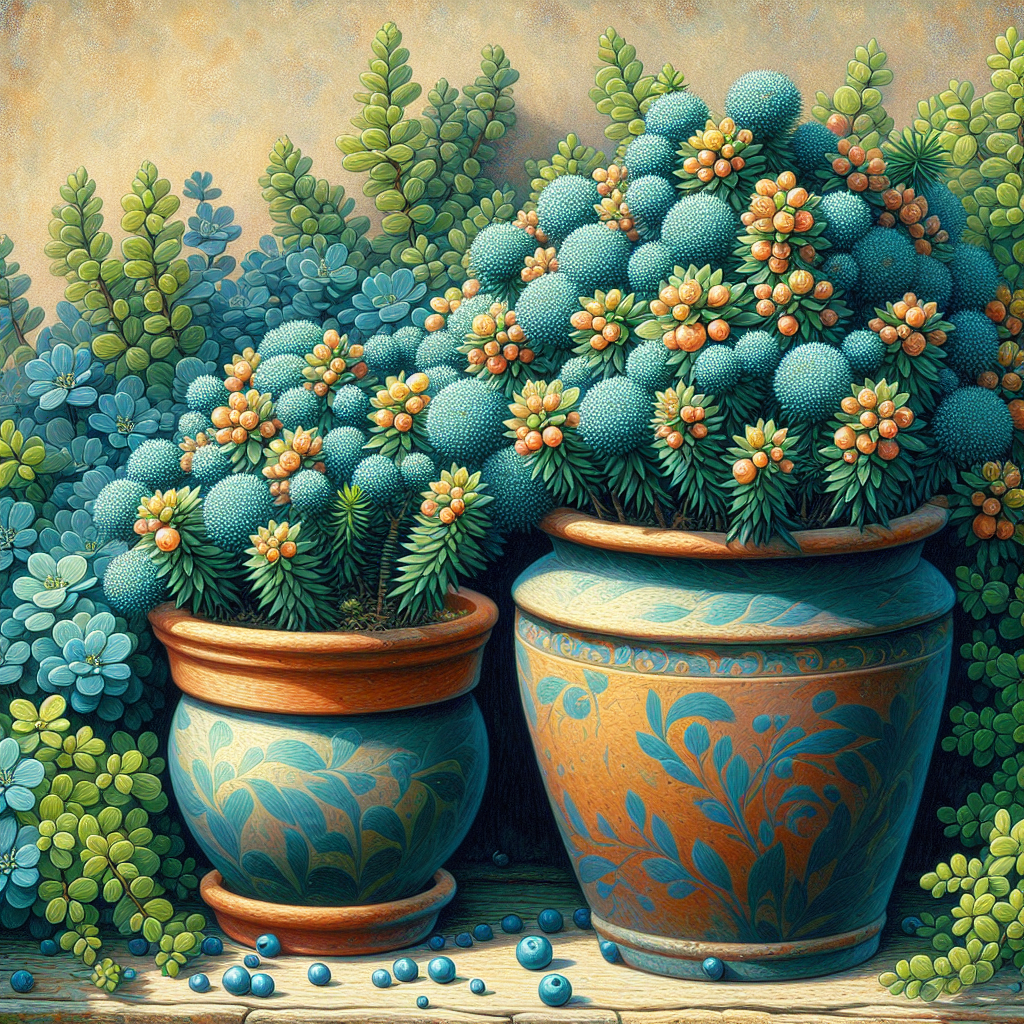Blue Point Junipers are a popular choice for landscaping due to their beautiful blue-green foliage, compact growth habit, and low maintenance requirements. While these evergreen shrubs can thrive in the ground, they can also be successfully grown in pots with the right care and attention. In this article, we will discuss how to successfully grow and maintain Blue Point Junipers in pots.
Choosing the Right Pot
When selecting a pot for your Blue Point Juniper, it is important to choose one that is large enough to accommodate the plant’s root system. A pot with a diameter of at least 12-18 inches is recommended to allow room for proper growth. Additionally, it is important to choose a pot with good drainage holes to prevent water from pooling at the bottom, which can lead to root rot.
Potting Mix
Blue Point Junipers prefer well-draining soil that is slightly acidic. A mix of peat moss, perlite, and pine bark works well for these plants. Avoid using heavy clay soils or those that retain too much moisture, as this can lead to root rot. When repotting your Blue Point Juniper, ensure that the new potting mix is fresh and free of pests or diseases.
Light Requirements
Blue Point Junipers require full sun to thrive. Choose a location for your potted plant that receives at least 6-8 hours of direct sunlight each day. If growing indoors, place your plant near a sunny window or use grow lights to provide adequate light.
Watering
Proper watering is essential for the health of your Blue Point Juniper. While these plants are drought-tolerant once established, they still require regular watering, especially during hot weather. Allow the top inch of soil to dry out between waterings, then thoroughly saturate the soil until water runs out of the drainage holes.
During the winter months, reduce watering frequency as the plant enters dormancy. Overwatering can lead to root rot and other issues, so it is important to monitor soil moisture levels regularly.
Fertilizing
Blue Point Junipers do not require frequent fertilization but can benefit from an annual feeding in early spring. Use a slow-release fertilizer specifically formulated for evergreen shrubs and follow package instructions carefully. Avoid over-fertilizing as this can cause nutrient imbalances and harm the plant.
Pruning and Maintenance
Regular pruning helps maintain the shape and size of your Blue Point Juniper and encourages new growth. Use sharp pruning shears to remove dead or damaged branches, as well as any overgrown or unruly growth. Pruning should be done in late winter or early spring before new growth begins.
In addition to pruning, it is important to regularly check your potted Blue Point Juniper for pests or diseases. Common issues include spider mites, scale insects, and fungal infections. Treat any problems promptly with an appropriate insecticide or fungicide to prevent further damage.
Winter Care
During the winter months, protect your potted Blue Point Juniper from freezing temperatures by moving it indoors or wrapping it with burlap if left outside. Water sparingly during cold weather but ensure that the soil does not completely dry out.
Repotting
Repotting your Blue Point Juniper every 2-3 years helps prevent root-bound conditions and allows for fresh soil and nutrients. When repotting, gently loosen the roots and trim any excessively long or tangled roots before placing them in a larger pot with fresh potting mix.
In conclusion…
Thriving Blue Point Junipers in pots requires attention to their specific needs for light, water, soil, and maintenance. By choosing an appropriate pot size with good drainage holes and using well-draining soil mixtures enriched with organic matter such as peat moss or pine bark dusts; providing adequate sunlight exposure while maintaining proper watering practices; feeding seasonally with slow-release fertilizers suitable for evergreens like these junipers – you’ll be sure they’re off on their way towards thriving beautifully! Remember always protect them during wintertime by bringing indoors if necessary.. Happy planting!













